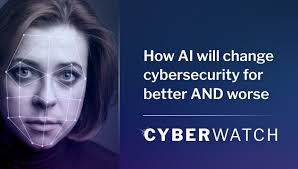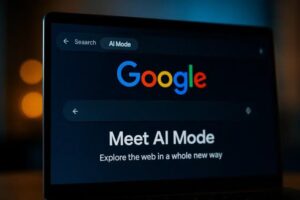AI-Powered Cyberattacks: How Hackers are Using ChatGPT

Introduction
Imagine receiving an email from your boss, except it’s not really them. The tone, AI-Powered Cyberattacks: even the subtle quirks of their writing style are all there, but behind the scenes, a hacker is pulling the strings using AI. This isn’t science fiction; it’s happening right now. In 2025, cybercriminals aren’t just using AI—they’re mastering it. Tools like ChatGPT, originally designed to assist with writing and problem-solving, have been hijacked to automate scams, write malware, and even clone voices for deepfake fraud. The result? Attacks that are faster, smarter, and scarier than ever before. This article dives into the dark side of AI chatbots, revealing how hackers are exploiting them, the real-world damage they’re causing, and, most importantly, how you can stay safe in this new era of digital deception.
The Rise of AI-Powered Cybercrime
Since its inception, AI has expedited the ability of cybercriminals to innovate their techniques. Low-skilled attackers now leverage AI chatbots for malware generation and security filter circumvention as well as system vulnerability exploitation to implement hacking techniques.
Phishing attacks have become more dangerous through their automated nature, which currently represents a major security concern. The quality of grammar in previous phishing emails made them easy to identify because of their incorrect language usage. An AI program named ChatGPT creates perfect individualized communications through its AI technology to duplicate genuine correspondence between banks and employers and governmental departments. Cybersecurity Ventures forecasts that AI-generated phishing attacks will double again in 2025 since their numbers surged 300% between 2023 and 2025.
The development of malware becomes effortless through the use of assistive artificial intelligence systems. Hacking tools enable users to request simple commands like “Create a Python script for file encryption and Bitcoin ransom functions,” which generates operational ransomware code in only a few seconds. OpenAI and other AI providers have installed security systems to reject straightforward malicious requests, but criminals overcome restrictions through prompt alterations and accessing jailbroken AI models that exist on the dark web.
Real-World Cases of AI-Powered Attacks in 2025
Several high-profile cyber incidents in 2025 have been linked to AI-powered tools:
1. The “Deepfake CEO” Scam
In early 2025, a multinational corporation lost $2.5 million after hackers used AI-generated deepfake audio to impersonate the CEO in a video call. The attackers combined ChatGPT-generated scripts with voice-cloning AI to convincingly instruct an employee to transfer funds to a fraudulent account.
2. AI-Generated Polymorphic Malware
Darktrace Security identified a fresh malware strain that changes its code at each infection attempt to avoid detection. The malware development uses AI models to modify its structural code automatically during each system infection, which defeats traditional antivirus detection methods.
3. Automated Social Engineering Bots
Hackers are deploying AI chatbots on social media and messaging platforms to manipulate victims into revealing sensitive information. These bots engage in natural-sounding conversations, build trust over time, and then trick users into clicking malicious links or sharing credentials.
How Organizations Are Fighting Back
The development of intelligent cyberattacks among attackers has encouraged security professionals to deploy their own AI protection systems. Some key countermeasures include
- CrowdStrike, along with Palo Alto Networks, deploys machine learning to study operational patterns and identify abnormal activities in the present to reveal threats before they create destruction.
- New programmes called deepfake detection tools verify the authenticity of digital communications by detecting tiny irregularities that exist in generated AI materials.
- Zero-trust security models became popular among enterprises due to their policy, which limits attackers to single-system access even after breaking into a system. The models require users to confirm their identity at all times.
How Individuals Can Protect Themselves

The responsibility to stay alert falls equally on individuals since organisations invest in advanced security measures.
- Understand that any unverified communication requires double verification of its legitimacy via official communication channels.
- Multi-Factor Authentication (MFA) provides additional security protection that protects your accounts from those who have stolen credentials.
- The practice of keeping software updated prevents breaches because many attacks that use AI exploit known vulnerabilities.
- Learning about AI threats represents your primary defence method since awareness serves as the starting point. Learning about the operation of AI scams enables better detection of their deceptive tactics.
The Pros and Cons of AI-Powered Cyberattacks in 2025
The Upside: How AI is Changing Cybersecurity (For the Better)

AI does play a role in cybercrime activities, but the situation is not purely negative. The hacker tools that are exploited by cybercriminals serve as defensive fuel to develop protective measures that enhance cybersecurity capabilities beyond previous standards.
1. Faster Threat Detection
AI-based security systems conduct time-based massive data evaluations to detect anomalous behaviour, which human operators cannot identify until after the fact. Darktrace, together with CrowdStrike, relies on machine learning to predict security attacks to block them before they occur.
2. Automating Security Responses
The immediate capabilities of Imagine receiving an email from your boss, except it’s not really them. The tool, AI-Powered Cyberattacks, enables automatic blocking of suspicious operations as well as the separation of affected devices and the deployment of defensive measures during ongoing attacks. Defenders gain control through the reduction of damage caused by security incidents.
3. Fighting AI with AI
Phishing email detection tools from security firms employ artificial intelligence to track down the simulation techniques of hackers. NLP technology detects inconspicuous shifts in verbalization patterns that human analysts to overlook.
4. Smarter Fraud Prevention
The analysis of customer spending patterns by Imagine receiving an email from your boss, except it’s not really them. The tool, AI-Powered Cyberattacks, identifies fraudulent transactions for banking institutions and financial organizations. AY detects hacking attempts through frozen transactions, followed by instant notifications to account owners.
The Downside: How AI is Fueling a New Wave of Cybercrime
The defensive capabilities of artificial intelligence benefit cyber defenders, but crooks receive equally dangerous new hacking abilities from it. Hackers use AI against society through the following methods:
1. Hyper-Realistic Phishing Attacks
The age where scammers sent out pathetic writing in their fraudulent communications has ended. Through ChatGPT, AI chatbots have achieved the capability to create flawless messages that duplicate the style of both real organizations and familiar individuals. Trained professionals become victims of attacks that prove so convincing that they accidentally fall into the deception trap.
2. AI-Generated Malware
Hacking operations no longer depend on programming talents from hackers. Cyber hackers now request AI systems to create harmful scripts and ransomware and exploit software vulnerabilities because AI simplifies criminal access to the world of cybercrime.
3. Deepfake Social Engineering
Technology allows voice cloning tools and deepfake video generation to create fake content for CEO financial scams and customer support deception, along with political information manipulation. In 2025, hearing isn’t believing.
4. Adaptive, Evolving Threats
Computers powered by artificial intelligence have enhanced polymorphic malware by causing quick variations in code, which eliminate the ability of standard antivirus tools to identify the threats.
Conclusion
The entry of AI systems into cybercrime operations creates a new and concerning risk environment for society. Anyone possessing an internet connection with a destructive purpose can perform operations formerly limited to professional hackers. The rising complexity of AI-powered attacks meets an equivalent level of cybersecurity protection from the industry.
The key takeaway? Your safety needs both AI knowledge and alertness while using AI to protect you from threats in addition to enhancing productivity. The effectiveness of AI tool usage becomes the main factor that defines whether someone becomes an attacker or defender as AI moves forward.
I am ready to provide suggestions about particular AI security solutions that will help defend against these vulnerabilities. Please provide details about the assistance you need from me.










